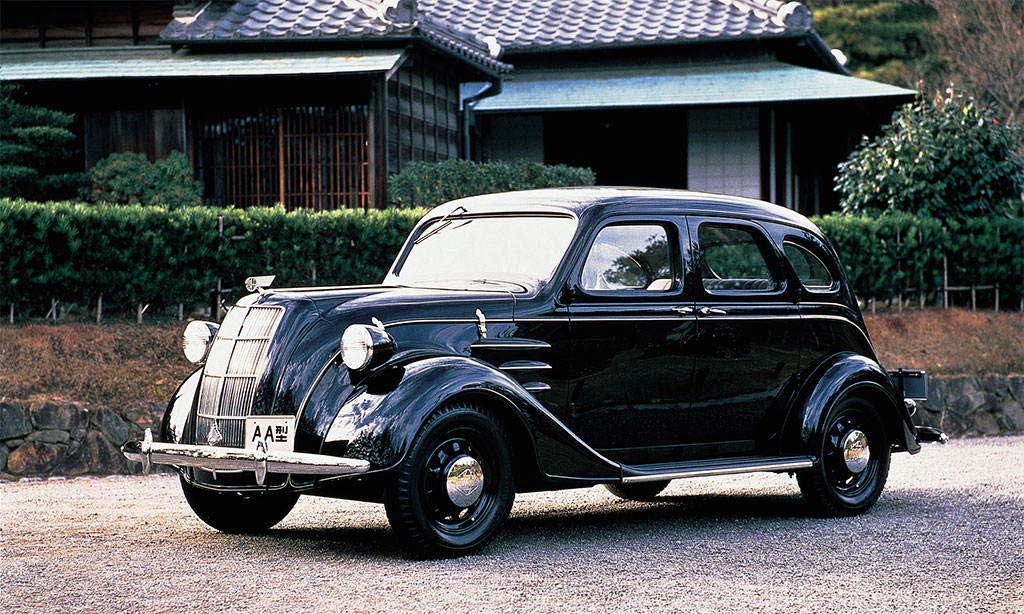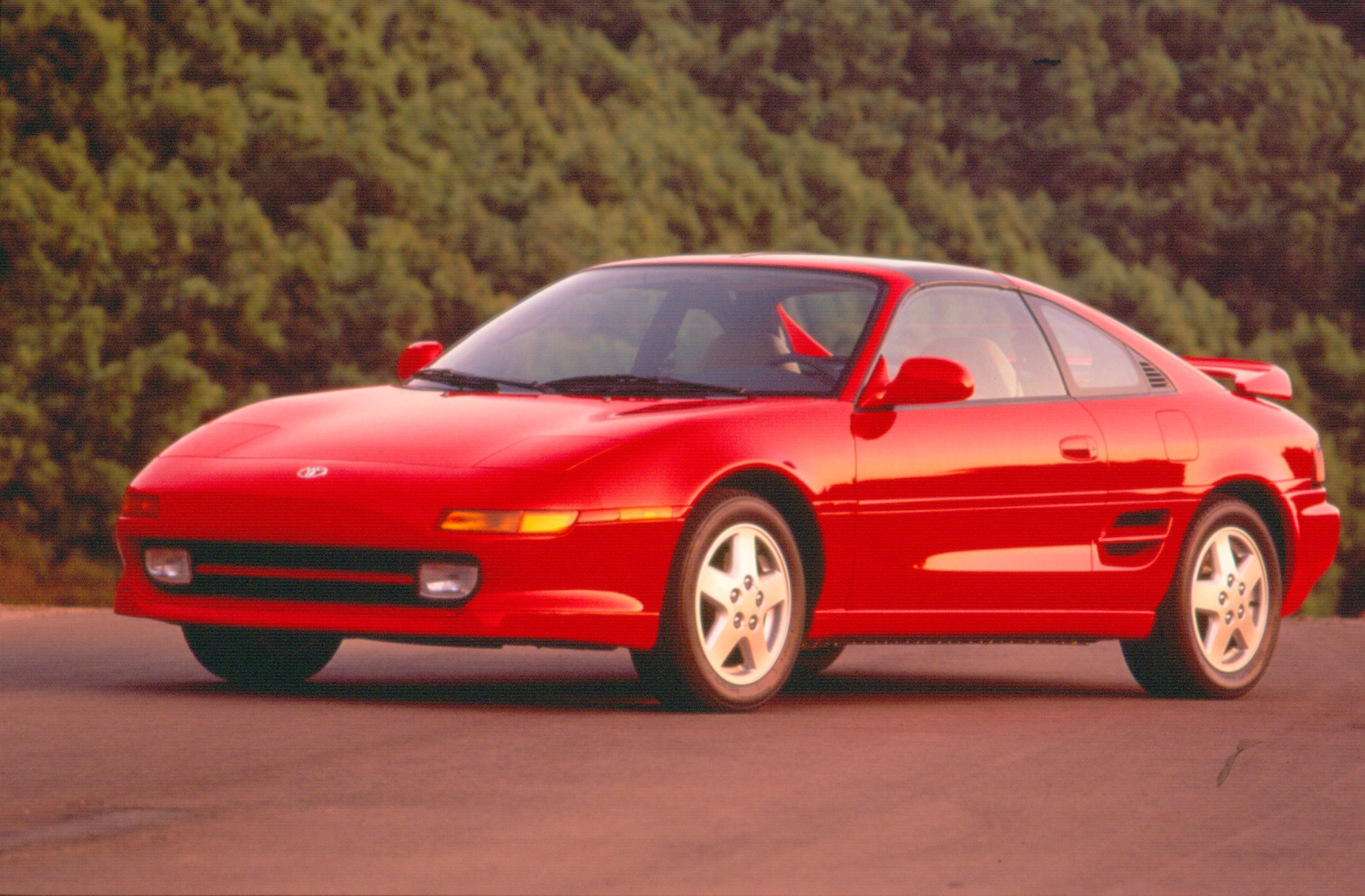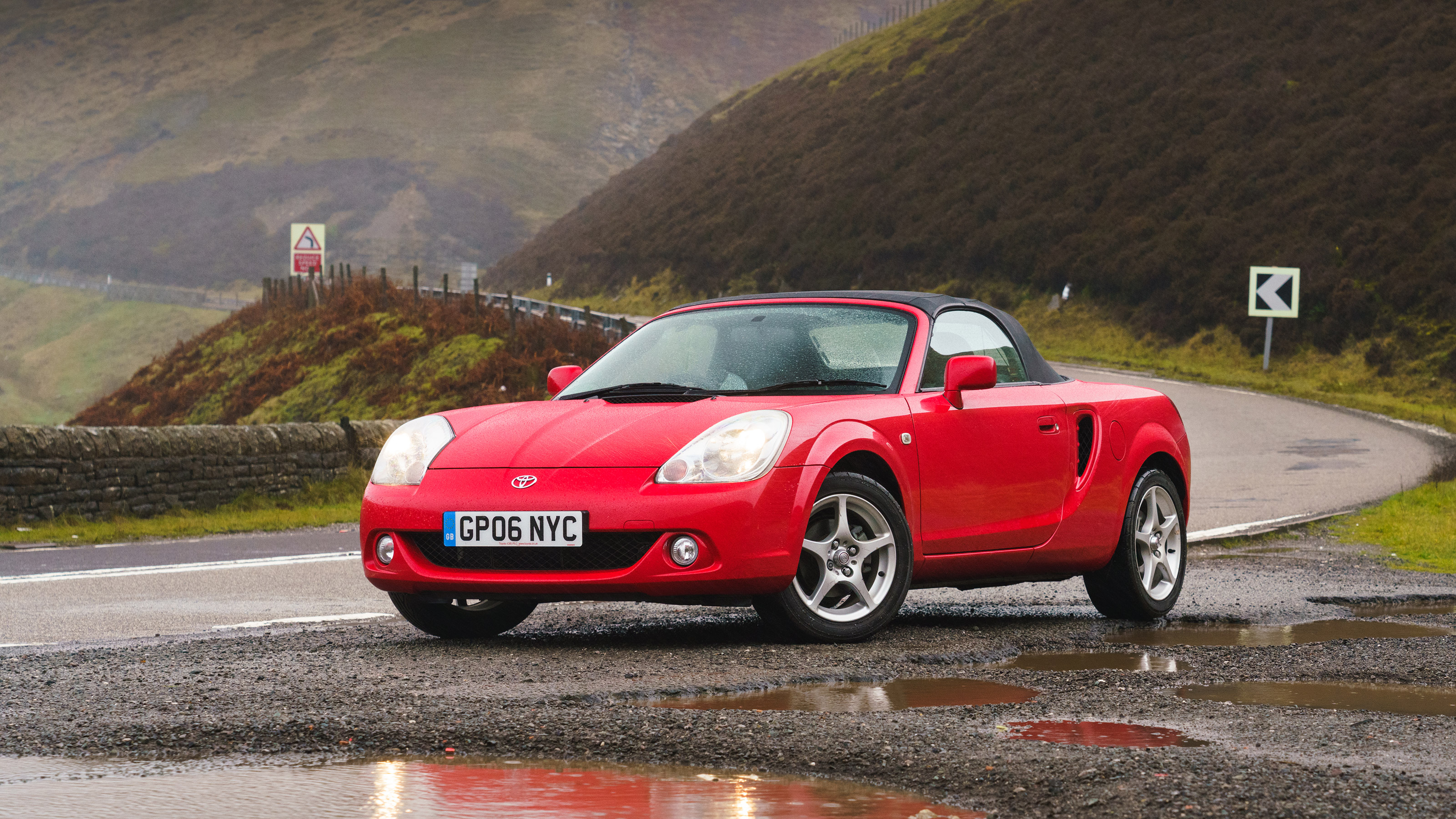First and apropos to what’s happening in the world, a small bit of dialogue from one of my favorite movies, Midnight Run:
Jonathan Mardukas (played by the late Charles Grodin): There’s good and bad everywhere, Jack.
Jack Walsh (played by Robert DeNiro): There’s bad everywhere. Good I don’t know about.
******************
I seriously considered writing about Tesla in this post. I tip my cap to Elon Musk. For a long time, I was a critic and skeptical that the company would succeed. I still think, like many automobile industry observers, that a large proportion of those in the US who buy a Tesla do so because they want that particular make and not because they necessarily want an electric vehicle.
Still, I think much or most of that company’s history has yet to be written. I decided, instead, to write about a company that–at times–has been the leading automobile manufacturer in the world, Toyota.
Quoting the standard catalog of Imported Cars, “Many an automaker began with bicycles or motorcycles, but Toyota evolved instead from a textile firm in Japan. Sakichi Toyoda formed the Toyota Automatic Loom Works in 1926.”
Automotive prototypes began to be built around 1930 with full production of cars beginning in 1936 with the AA model. The six-cylinder overhead-valve engine was patterned after Chevrolet’s; the chassis and transmission were from Chevrolet. The styling was “borrowed” from the Chrysler Airflow. Take a look:

Of course, World War II greatly affected Toyota’s operations. After the war, the United States–which was occupying Japan–did not allow the production of cars, but did allow the production of trucks. With the escalation of the Cold War in the late 1940s, US officials felt it would be better if Japan were allowed to fully rebuild its economy with one of the manifestations being that Japanese firms were allowed to build cars beginning in 1949.
At first, sales were slow because, frankly, most Japanese did not know how to drive. In 1950, Toyota established a division, ostensibly to promote sales, but one that was also intended to familiarize the Japanese people with driving. At first, progress was slow as Toyota built only 8,000 cars in 1955, but reached 141,000 by 1958. That was the year Toyotas were first sold in the US.
Toyota sales in the US grew quickly in the 1960s as shown by this chart:
| Toyota US Sales | Total Toyota Production | US Pct | |
| 1963 | 1,096 | 128,843 | 0.9% |
| 1964 | 2,029 | 181,738 | 1.1% |
| 1965 | 6,404 | 236,143 | 2.7% |
| 1966 | 20,908 | 316,189 | 6.6% |
| 1967 | 38,073 | 476,807 | 8.0% |
| 1968 | 71,483 | 659,189 | 10.8% |
| 1969 | 130,044 | 964,088 | 13.5% |
| 1970 | 208,315 | 1,068,321 | 19.5% |
The popular models in the US during this period were the Corona and, later, the Corolla. Unlike Datsun/Nissan, whose demand was helped by the introduction of the 240Z sports car in 1970, Toyota’s popularity was based on reliable family cars. The 2000 GT sports car, although made famous by its appearance in the James Bond film You Only Live Twice, was a limited production vehicle with only about 350 ever being produced from 1967 to 1970.
To be honest, the vast majority of Toyota products do not appeal to me. I respect the success of the company, but there are very few Toyota cars that even register on my radar. Of course, I am not counting the Lexus LFA and Lexus LC that were/are produced by Toyota’s luxury division.
If I had to pick a “pure” Toyota from the past that interests me it would be the MR2. I very much like the looks of all three generations, as shown below:



The MR2 was produced from 1984 to 2007 and was Japan’s first mid-engine production car. When European and other Japanese manufacturers were succumbing to the “hot hatch craze,” Toyota introduced the MR2, instead.
As best as I can figure, total MR2 sales were about 270,000 in the nearly quarter century the car was in production. The car was not sold in the US after 2005 due to rapidly falling sales, but was offered in other countries through 2007.
Of course, Toyota is also known for the Prius hybrid, which it introduced in 1997. About ten years ago, annual Prius sales in the US reached nearly a quarter of a million, but declined by 63% from 2013 to 2018. Most of that decline is due to competition in the hybrid segment, but some of the more recent decline, especially since 2018, is due to increasing sales of “pure” EVs, like Tesla.
Toyota’s North American headquarters are located in our old stomping grounds of Plano, Texas having moved there from Torrance, California last decade. In 2021, the United States remained the company’s largest market with sales of Toyota and Lexus vehicles reaching 2.33 million. About half that number were actually produced in the US.
From here on out, the Cars A To Z series grows very difficult. Of course, I will not use Volkswagen as the “V” car. It is possible, though not likely, that I will combine letters into a single post.
#CarsAToZ
#Toyota
#ToyotaMR2
#somanycarsjustonelife
#disaffectedmusings
If you like this blog please tell your friends and share the blog URL (https://disaffectedmusings.com). Thanks.
The 2nd generation MR2 is one of my favorite cars. Now that I am no longer giving 72% of my salary to my ex wife, I may look into one (alimony and child support laws in Maryland suck). I did not like the looks of the last generation. And I guess it doesn’t make sense to make inexpensive sports cars when the same parts can go into a car with a greater markup.
Now my recently purchased Lexus ES 350 is nice overall. Surprisingly it lacks some creature comforts like ApplePlay and a convenient place for my phone that my Hyundai had, but I enjoyed it on a trip from Baltimore to Philadelphia.
LikeLike
Glad I could oblige your fondness for the second generation MR2. It is my favorite of the three as well. Of course, I would want it to have more than 200 HP/200 LB-FT of torque. In Japan, the turbo engine had a little more power, but not much.
LikeLike
A friend of mine used to have an MR2. I always thought I’d “look good” in one (if that’s even possible.) I never made it happen.
As you know, I am a fan of the Toyota hybrid system, design proven by the Prius and other cars and SUVs in their line. I do think, however, that Toyota is “missing the boat” by not focusing more on all electric vehicles. Though I don’t know that I will ever own a fully electric vehicle, I think they will slowly gather market share as commuter cars.
LikeLike
Thanks, JS. Maybe Toyota has the courage to go a different way.
LikeLiked by 1 person